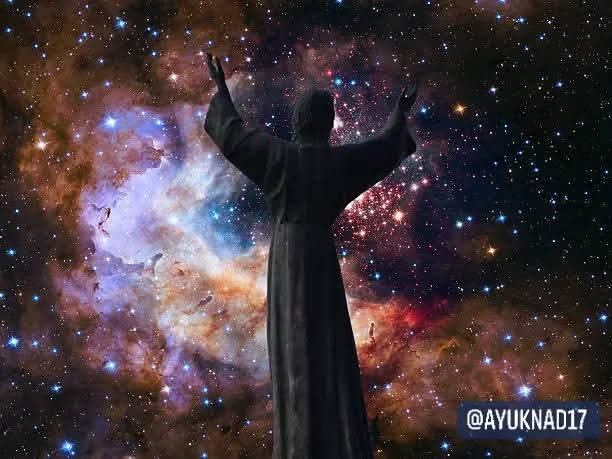Solemnity of Our Lord Jesus Christ the King of the Universe
23rd November 2025
Lectionary Readings: 2 Samuel 5:1-3; Psalm 122:1-2, 3-4, 4-5;
Colossians 1:12-20; Luke 23:35-43
This Sunday’s liturgy invites us to reflect on the messianic theme. The first reading presents the beginning of David’s reign from Hebron, and then he will be anointed (Mashiach) as King, assuming his definitive place in Jerusalem. This act established forever the identity of Israel and its centrality over the Land of Israel, Jerusalem and the Temple, the place of God’s presence in the midst of his people.
This relationship between heaven and earth is understood in the reading of Psalm (122) where it reads: “Jerusalem built as a city (shechuberet-la yachdav) that is joined (together)”. The Talmud (Taanit 5a) teaches that the heavenly Jerusalem is unified with the earthly Jerusalem, forming a unique reality.
This model of unifying the people, guided by their Anointed One (Messiah) in the name of God, founded in Jerusalem, progressively, in the history of the Jewish people, will assume the messianic hope of liberation for Israel, of its redemption, and even extending to the universal. And we even see messianic figures that differ from the Davidic perspective appearing, such as chapter 7 of the book of Daniel or chapter 53 of the book of Isaiah.
Over time, the idea and meaning of the Messiah became the central theme in Jewish tradition. The statement that Jesus is the Christ = Messiah = Anointed One, resonates in an amplified way with the rich diversity of Jewish tradition that developed regarding the Messiah. In each generation or in different historical circumstances, the interest in explaining events in the light of the Messiah reappears. There is a constant search to reinterpret its meaning, the content of the expectation, the affirmation of his coming, its foundation… Many other reflections could still be listed about the Messiah. The Christian tradition, which defines itself by the affirmation of Jesus as the Messiah announced by the Scriptures and awaited by the Jewish people, adds the hope in his glorious manifestation, that is, in his coming: “Men of Galilee, why do you stand looking into heaven? This same Jesus, who was taken up from you into heaven, will come back in the same way you saw him go into heaven” (Acts 1:11).

Speaking of the Messiah, therefore, encompasses various dimensions of the faith experience that runs throughout the Bible and its oral tradition. Given that the meaning of Messiah (Mashiach) is the same as Christ (Greek: Christos) and Anointed One, the Christological elaboration, from the point of view of religious understanding, precedes Christ himself. Daniel states: “The idea of Jesus as the divine-human Messiah goes back to the very beginning of the Christian movement, to Jesus himself and even before” (in: The Jewish Gospels – The Story of the Jewish Christ, The New Press, 2012, 7). In a certain way, Jesus is the novelty that clothes the Christological reality that had been elaborated beforehand in the tradition of Israel, through the religious understanding of the Anointed One, with the expectation of the second manifestation being added to the term Messiah (Anointed One/Christ) throughout the history of Israel.
Generally, we are not accustomed to thinking of pre-Christian Christology as an inverted line of reasoning, since we are not familiar with the idea that understanding the Messiah, encompassing the entire biblical period of the people of Israel, as the foundation for the elaboration of Christology. In fact, a complete view of the manifestation of the idea of the Messiah in the biblical period, before Jesus and his movement, is fundamental to understanding the proclamation of Jesus as the expected Messiah of the Jewish people. It is, therefore, in the Jewish universe of the Second Temple period, in the Land of Israel and in the diaspora, where the essential elements of the identity and tradition of the Christian faith are found. It is a fact that the concept of the Messiah (Anointed One = Messiah) is always present in the history of the people of Israel; it transcends time and occupies a primordial place in the religious universe, whether in relation to the sacred through anointing, or as a reality sustaining the historical hope of a better future and as a source of liberation and salvation for humanity. However, each era has its variations and different ways of explaining and understanding it. The announcement by the disciples of Jesus, a Jewish man, as the Messiah, is founded on the experience of faith in his death and resurrection. The transmission of this lived experience of faith, as we learn from the accounts of the New Testament, is indebted to the set of various aspects of the understanding of the Messiah expressed in the tradition of the Jewish people founded on the Scriptures and their interpretation. And it is, therefore, only within this tradition of plural understanding of the Messiah that we find the means to better understand the proclamation of Jesus as the Messiah (Christ) of the Christian faith.
It is in the light of the post-Easter experience of faith – the death and resurrection of Jesus – and in the study of the Scriptures, that the elaboration of the coherent teaching and message of Jesus as Messiah, God made Man, Emmanuel, also linked to the lineage of David, is anchored. However, the multifaceted understanding that makes up the affirmation of Jesus’ first disciples in proclaiming him as the expected Messiah (Christ) will travel a long path within the Christian tradition in the following centuries.
We learn, in this feast in which the Church celebrates Christ the King, that our Christology is indebted to the rich and diverse tradition and messianic hope of the Jewish people.
This week’s Sunday Liturgy Commentary was prepared by
Elio Passeto, NDS, Jerusalem–Israel, Director
[Copyright © 2025]

Comments are closed